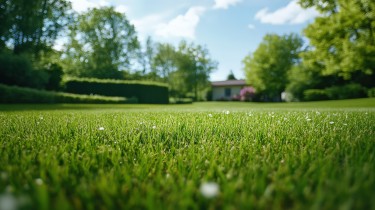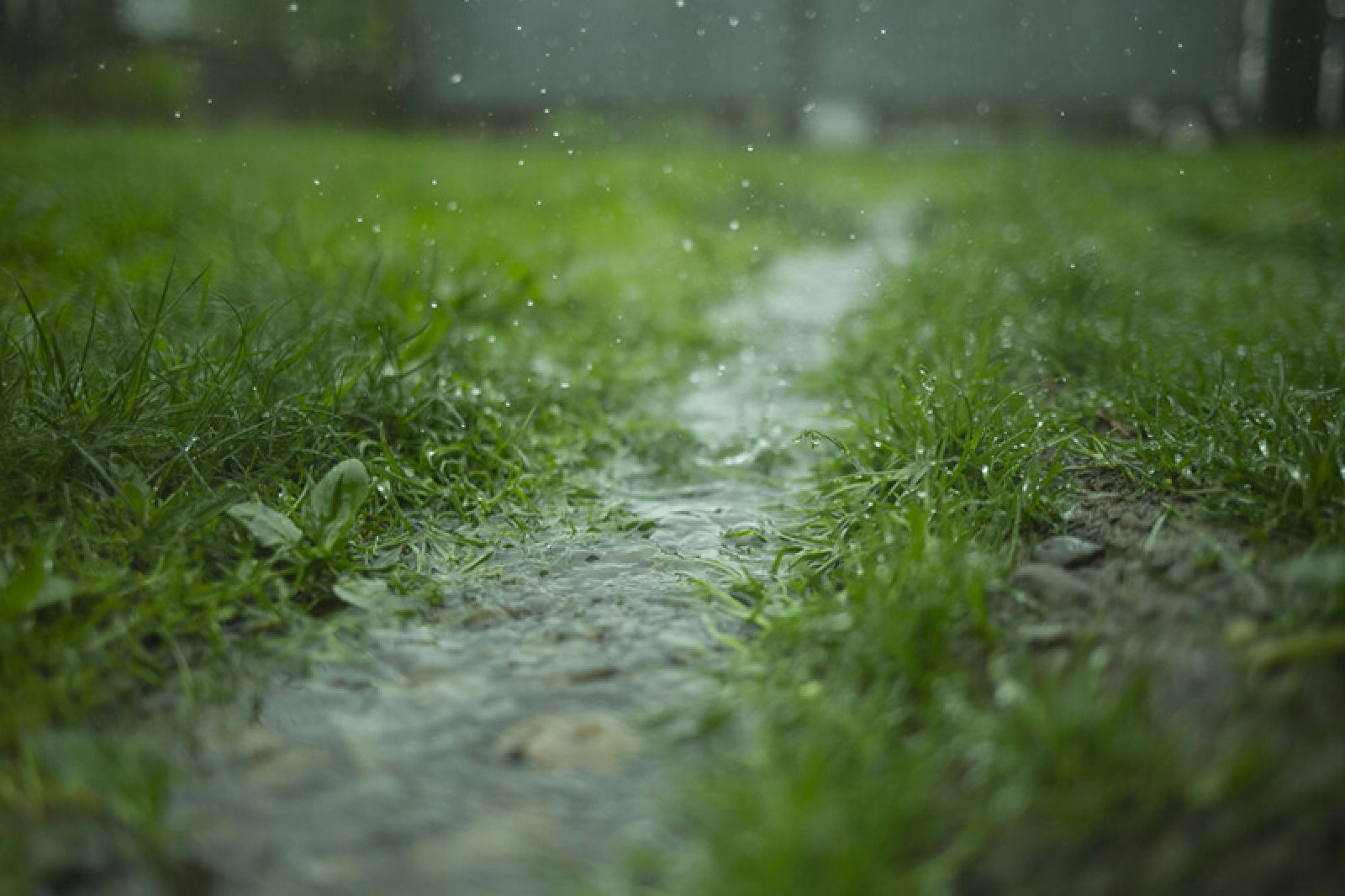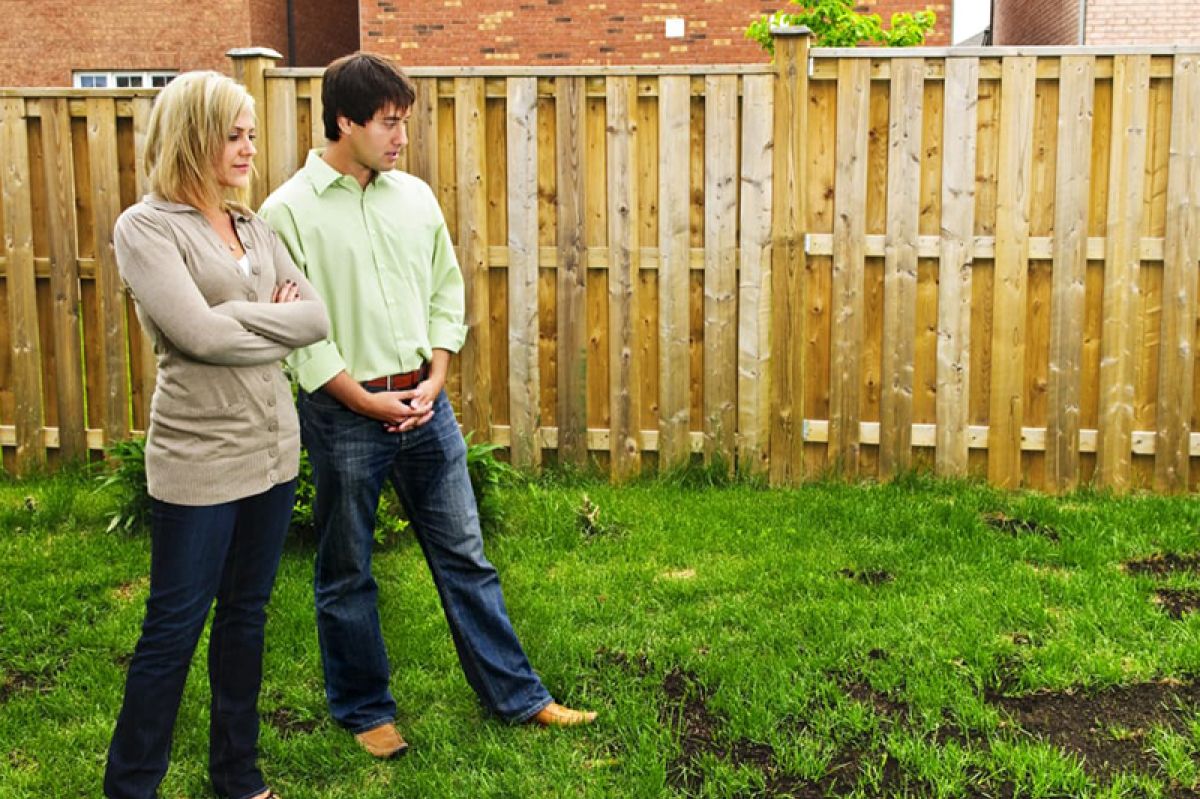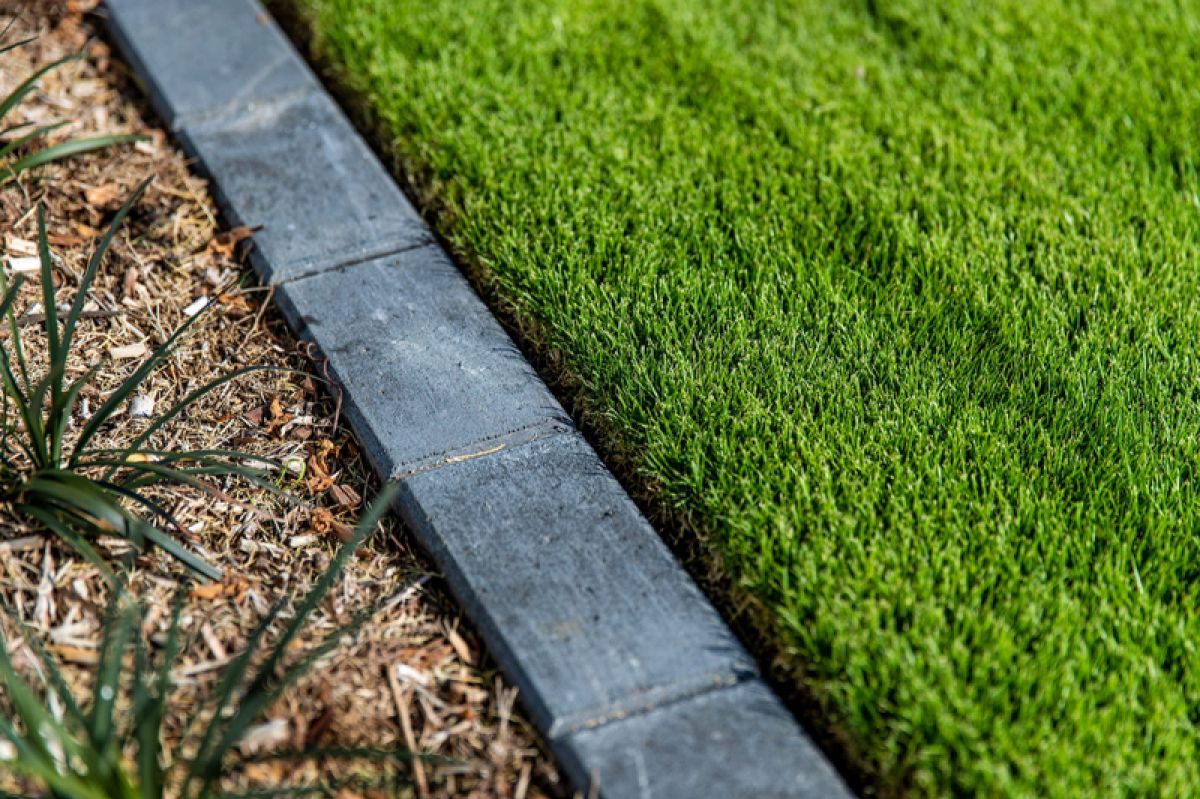

Discover the Secret to a Lush and Healthy Lawn
Read More ›
Blog
Left unchecked, water can cause serious damage…

Your lawn and gardens need water to survive — but if you’re one of the countless homeowners who have drainage issues on your property, too much can turn your yard into a soggy mess.
Dealing with drainage problems can be frustrating. It’s not always easy to spot the real problem (is it poor grading, soil compaction or something else?) and the solutions can be costly and time-consuming.
It’s almost impossible to enjoy your yard when your landscape isn’t draining properly. But how do you know if you have drainage problems or if there’s just been too much rain?
To determine if your property has drainage issues, check your yard for any of the following signs:
Fortunately, there are some simple solutions that can help correct the problems before they cause serious damage to your home and property.

A properly graded yard will direct water away from your home’s foundation and out onto the street, eventually finding its way to the storm drain or nearest water outlet.
Without proper grading, you’re no longer in control of where excess water flows after a storm — it will follow the path of least resistance, pooling into low points in your yard and even settling around your home’s foundation.
To improve the grade of your yard, build up the garden beds around your home’s foundation to a slope of five degrees. If you’re not sure what that looks like, the ground six feet from the house should be three inches lower than the ground next to the house.
In areas where there is no garden, pull back the sod and add some soil beneath it. Paved areas, like patios and walkways that are sloped toward the house, would likely have to be corrected by a professional.
If the grading issue isn’t huge and is isolated in one area around the house, you could also extend the pipe leading from your downspouts so that excess water runs away from the foundation.
The soil in Virginia is high in red clay, which can cause drainage problems in yards if it becomes heavily compacted. Clay has tiny particles that stick together, making it difficult for water to pass through — so the water pools on the surface after a heavy rainstorm.
The easiest way to fix this problem is to add organic compounds like garden compost, leaf mold or well-rotted manure to your soil, effectively breaking up the small clay particles, allowing them to drain more quickly.
When planting, choose native plants that tolerate clay soil — their root systems will help to soak up the excess water. Daylilies, coneflowers, phlox and hosta all come to mind, but there are plenty of others. Having trees on your property can also help with storm run-off — rain is captured in their canopy and the roots and leaf litter helps improve soil conditions.
For areas with a lot of heavy soil, you might want to consider adding a French drain or dry creek bed. This involves digging a trench in the soil and covering it with loose gravel and river rock to direct water away from your property (just make sure it’s not going to the neighbor’s!).
This is an attractive and effective solution, but you may want some professional help with this, as digging in clay can be pretty back-breaking work!
As mentioned above, if your hard surfaces don’t have the proper slope it can lead to problems. If you’re planning on replacing your patio or walkways you might consider using permeable pavers. These pavers have crushed stone between the joints to help water seep into the ground below instead of pouring off in sheets.
If you’re not planning on replacing your hard surfaces, there are still a few things you can do. Building a French drain or retaining wall can help direct rainwater away from these surfaces.
If you have an old irrigation system, it’s a good idea to have it inspected for damaged lines and broken sprinkler heads. It may even be time to replace or update it.
If your irrigation system is in good shape, it still needs to be inspected on a regular basis. Sprinkler heads break and occasionally need adjusting so they’re not watering your driveway or patio!
And if you’re having trouble regulating your water use (like forgetting to turn it off!) you might want to consider upgrading to a smart irrigation system. Smart irrigation systems automatically adjust the watering schedule based on the actual conditions of your landscape and always “knows” just how much you need.

If you don’t take measures to correct the drainage problems on your property, you might end up with massive problems (like structural damage to your home’s foundation).
While some of the solutions are fairly simple, they still involve a lot of hard work — so let us help you. Our team is trained to spot potential drainage issues before they become a problem, and we offer water maintenance as one of our services.
Our Drainage System Maintenance plan will keep your system clear of debris and operating at peak capacity, saving you time, money and headaches down the road.
Take advantage of our complete suite of maintenance services:
Two-visit plans (spring & fall) and four-visit plans (spring, summer, fall and winter) are available… so contact us and we’ll be happy to help!
Written by Brandon Rushing, Founder & President
Posted on: April 4th, 2022